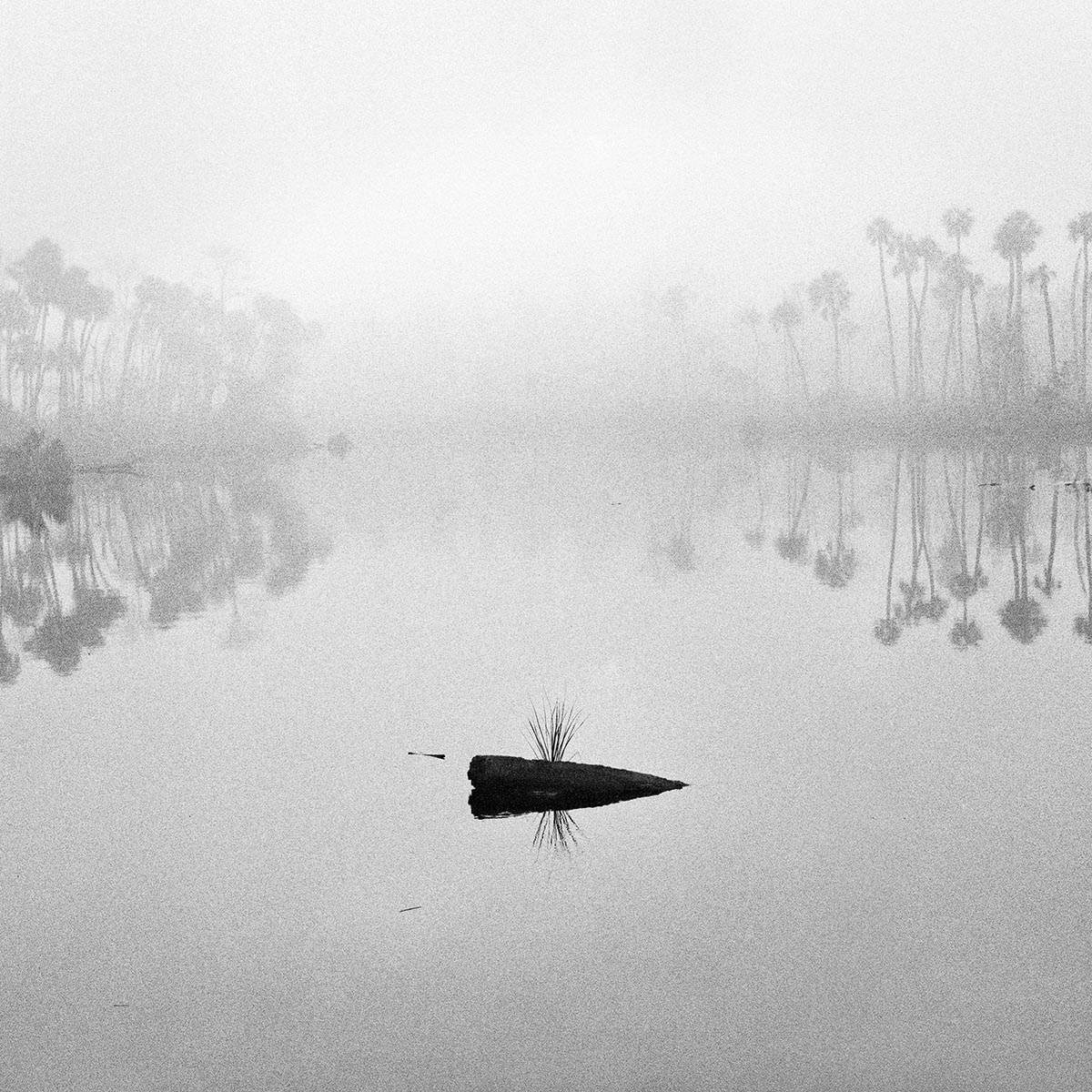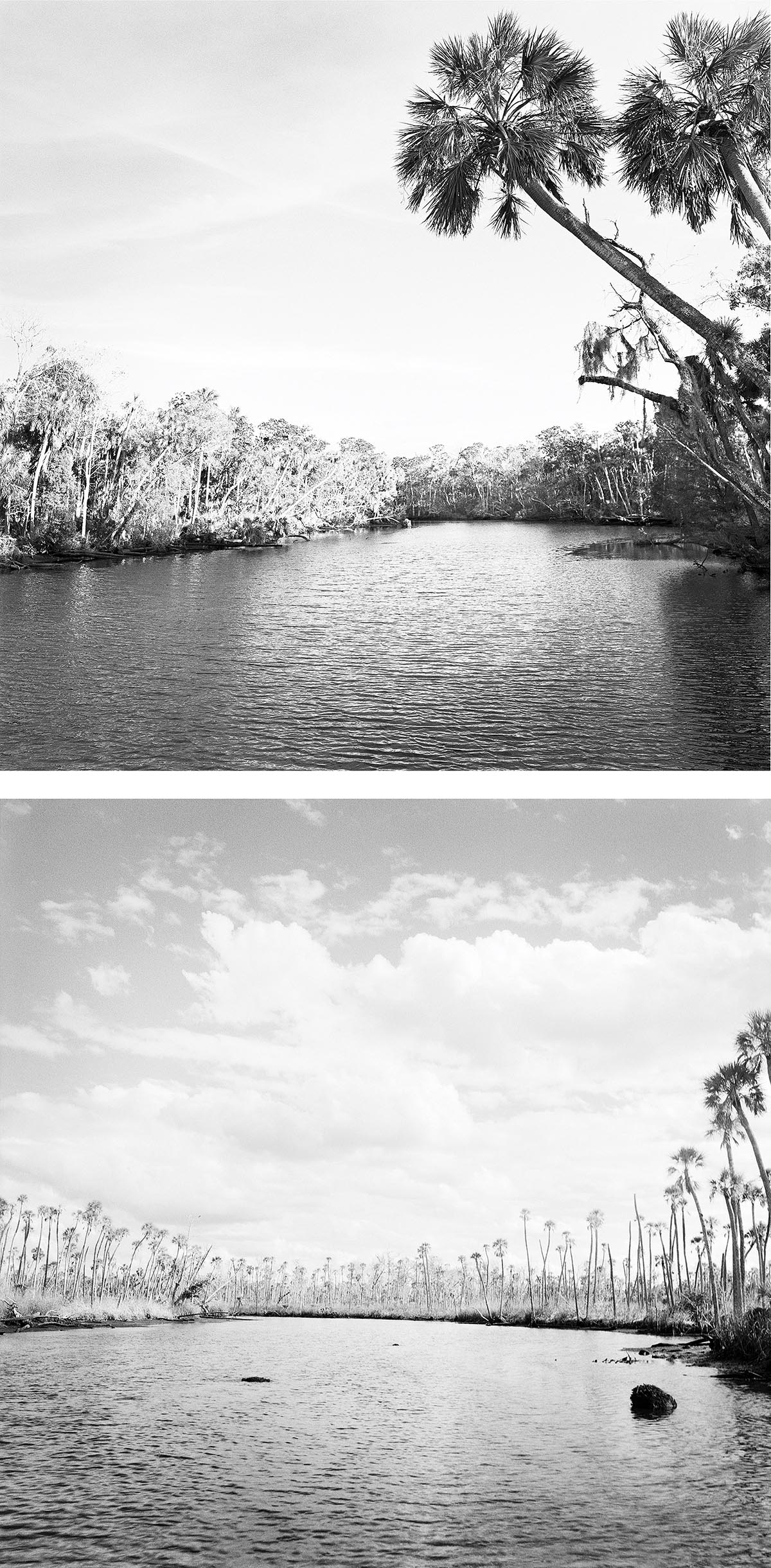
It can be difficult to pin down the full effects of climate change since shifts happen gradually over time. But Benjamin Dimmitt’s book “An Unflinching Look: Elegy for Wetlands,” which includes diptychs of the same wetlands as they’ve been altered by climate change since the late 1970s, accomplishes just that.
Inspiration: Dimmitt first photographed the Chassahowitzka National Wildlife Refuge on Florida’s Gulf coast in 1977 and was “overwhelmed by its lush, primeval beauty,” he says. In 2004, concerned about overdevelopment, storms, and rising seas in his native Florida, Dimmitt began photographing low-lying areas, and Chassahowitzka was his favorite location. In 2010, he noticed that saltwater had begun creeping into the refuge’s spring creeks, and by 2014, the effects were widespread. “My most recent photographs show wetlands that are no longer an ecosystem in transition but now a ruin, a nearly barren treeless salt marsh.”

top image, 2004; bottom image 2022
Equipment: To keep newer photographs consistent with his earlier photos, Dimmitt used the Hasselblad he bought in 1985 as well as a 1980 Nikon F2. He used Luna-Pro and Sekonic light meters and a Manfrotto ball head on an Induro tripod with carbon fiber legs that could handle brackish water and saltwater.
Challenges: There isn’t much firm ground in wetlands, so he often had to make photos from his canoe, which meant photographing from a seated position. Boat anchors were also needed, as were dry boxes for equipment. He banged the side of his canoe to announce his presence and scare off alligators and water moccasins.
Diptychs: Since he wanted side-by-side photographic comparisons, Dimmitt needed to remake shots from decades ago from the same vantage point. But he didn’t have metadata or GPS coordinates on the film captures he made decades ago, so he sent those images to his cellphone to use as reference. “Most often I used the trees in the earlier photograph to help position myself for the follow-up photograph,” he explains, which became harder as deforestation caused by rising sea levels occurred.
Lessons: “I learned long ago in college that glaciers would melt because of global warming and that seas would rise as a result,” he says. “I didn’t believe that this would happen in my lifetime, but it has become a persistent fact.” His photo project began as a love affair with the wetlands and has evolved into a farewell.
Amanda Arnold is a senior editor.

 View Gallery
View Gallery


